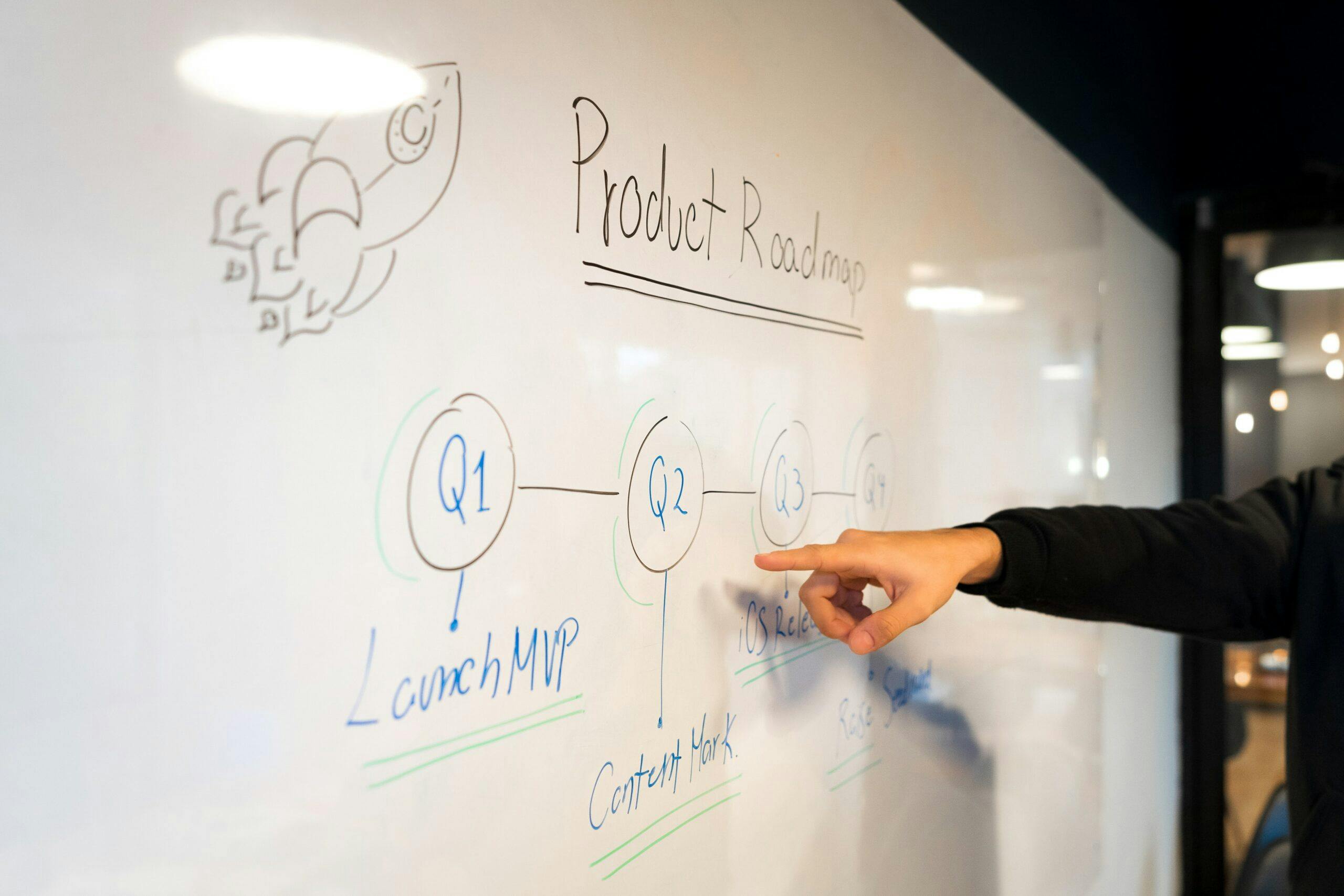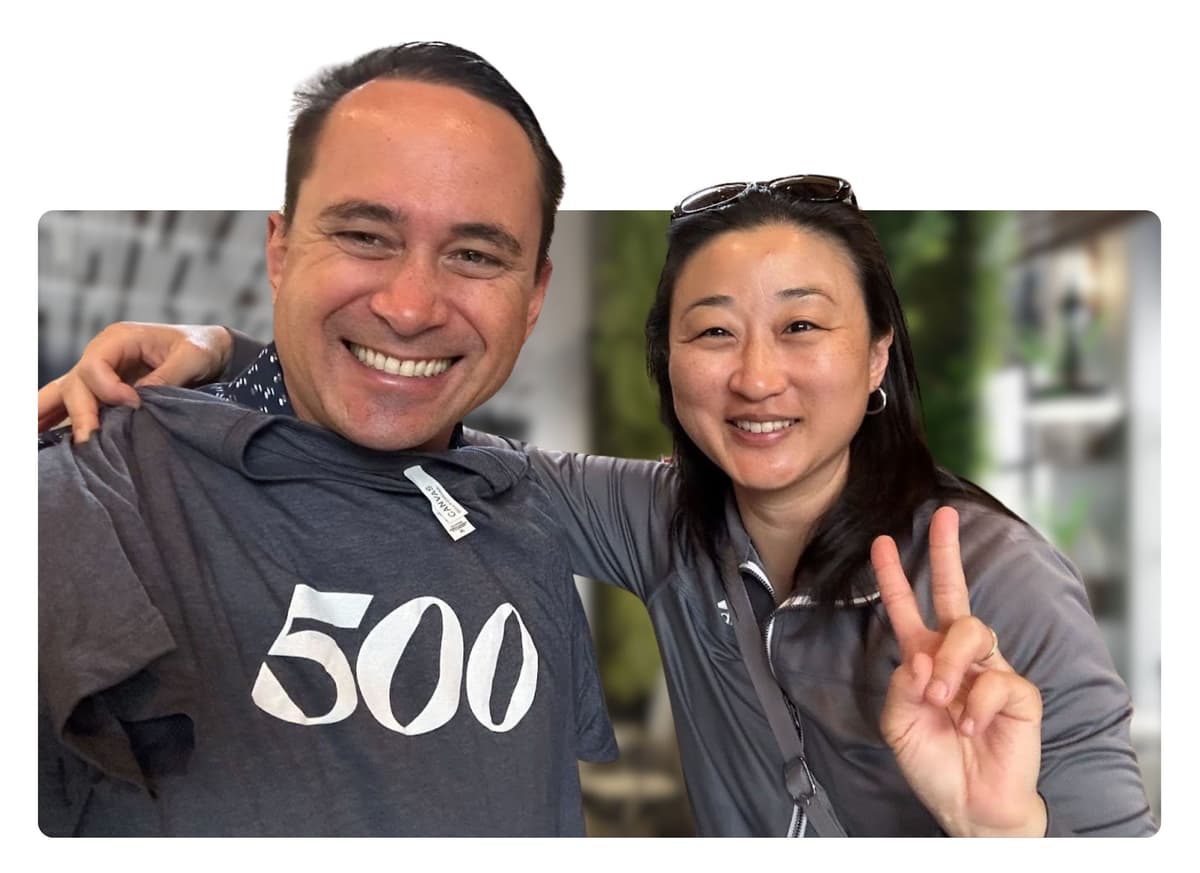Based on our experience of past periods of volatility, we want to share suggestions on how founders with pre-product market fit can best prepare for whatever lies ahead.
2022.07.22

Tony Wang

Source: Unsplash
Leonard Lee is a co-author.
All views and opinions expressed in this post are those of the individual 500 Global personnel, or other individuals quoted and are not the views of 500 Global or its affiliates.
Founders, you may be feeling the effects directly or indirectly of economic turbulence. As with any turbulence though, it’s not time to panic. Down markets don’t last forever. In fact, many of the best startups we’ve worked with have adjusted to shifts and bucked market trends.
As for this market, what we do know is that this isn’t 2020. It’s also not 2001. We’re not here to predict how long or deep this downturn is. Instead, based on our experience, our assessment, and our understanding of past periods of volatility, we want to share suggestions on how founders with pre-product market fit can best prepare for whatever lies ahead. There are some great posts that give background on why this market is different, so definitely read them–see Sequoia’s “Crucible Moment” as well as other helpful guidance, such as Craft Ventures “Operating in a Downturn” and Lightspeed’s “The upside of a downturn”).
What’s also very different about this environment is that many startups raised significantly more capital in the last 12 months than startups at a similar stage in previous downturns. The median seed round in the U.S. in 2021 was $2.5M whereas it was under $1M over 10 years ago (source: PitchBook Data, Inc. Q4 2021 PitchBook NVCA Venture Monitor). This could have unintended consequences as founders hire and spend more on activities that delay growth, not accelerate it.
To help you navigate turbulent times, here are some steps you can take:
1- Use a pre-product market fit (PMF) lens to evaluate every company activity
So for companies that are pre-PMF, where to start? Keep focused on finding PMF. We often see founders focused on activities that appear to help with finding PMF, except they may not. These activities include various forms of marketing from SEO to content, expanding sales teams or even building out features – all with the hope of discovering PMF. In this market, you can likely delay these activities until after finding PMF. So evaluate every activity your company does and whether or not it directly impacts PMF.
For example, if you’re a SaaS business and your monthly churn is higher than 10%, you most likely don’t have PMF and you should address that first before spending more time and money on building out your sales team. This can be especially problematic for companies that have raised large early-stage financing rounds in the last 12 months while capital was historically cheap. They tend to believe they should be hiring and growing immediately, even before they’ve identified PMF. This is in part driven by the expectations for venture scale growth on companies that raised large Series Seed or even Series A rounds before PMF. Unfortunately, they may not have the ability to raise more capital in this market before finding PMF. Also because capital was raised relatively easily for them, they might expect to raise easily again at the next fundraise, except that investor expectations may have changed, sometimes dramatically.
2- Focus on leading, not lagging KPIs
Next, find PMF signals closer to the beginning of the customer journey. We use revenue, retention, DAUs and many other KPIs to signal the health of the business. While these are great signals, they are also lagging KPIs and only materialize after significant company energy has been spent on product, marketing or sales. Focus on leading KPIs. When you get PMF signals closer to the beginning of the customer or user journey, you can react faster especially in an evolving market like we’re in now. For example, if you’re an enterprise SaaS company, the MQL qualification stage can often validate market needs well before you fully build out products.
3- Shorten experiment timing
This may require fundamentally changing how you run experiments. For example, startups traditionally want to build out a product before running experiments. However, ten cheap experiments can be more useful than one well-funded experiment. But now there is a corollary. One experiment where you can get results today may be worth more than experiments that take longer.
4- Solve for churn
In environments where capital is abundant, you can afford to grow topline in parallel with solving churn. In capital lean environments, churn will eat away your hard-earned customers that were acquired using costly capital. Also, churn is a signal of a lack of PMF, so it’s even more important to address if that is the case.
5- Lay off with compassion and decisiveness
Headcount is usually the largest startup expense. So layoffs or delaying hiring are your biggest levers to buy you more time for experimentation to find PMF. While we hope layoffs aren’t the normal course of action for any startup since they drastically affect the livelihood of those impacted, we know that sometimes these moves are unavoidable. You may have to let go of great people, but who aren’t going to figure out PMF for you. Unfortunately, many founders delay layoffs because they may not believe they need to or that they believe they can figure out PMF before they have to. Naturally, founders are optimists so it’s hard to believe that such drastic measures are needed, especially if they haven’t built companies during previous downturns.
Laying off people is one of the hardest things founders do, especially with small teams where you know everyone personally. It’s especially difficult when there is nothing wrong they did but the business just isn’t where it needs to be. So determine where layoffs need to happen as early as possible and always do it with compassion. No matter how hard it is on you to make that decision, it will be much harder for those affected. Be compassionate and decisive. Doing so without delay is an important form of compassion. If there is a prolonged market downturn, it may be more difficult for those affected to secure another job later when things get worse.
6- Keep your Missionaries, eliminate Mercenaries
When you hit turbulence, mercenaries (e.g., those who join because of the high compensation) can leave for more stability. Missionaries will often stay and figure it out with you. Consider rewarding them with equity since they’ll be the ones who stick with you when others would normally leave. Equity can be one of your best forms of aligned incentives to keep your best people around to help you figure out PMF.
7- Resist the temptation to hire to find PMF
Many founders who aren’t sales or marketing minded are tempted to hire for those roles before they’ve figured out PMF. A new VP of sales won’t figure out your sales playbook let alone PMF for you. Experienced sales hires are usually best when a playbook is in place (and perhaps even a sales staff). If they don’t have a clear path to hit their quota in six months, they’ll likely leave after their initial draw expires. Don’t make one of the costliest (money and time) mistakes founders make pre-PMF.
8- Prioritize fundraising speed over valuation
Even just a few months ago, founders were holding out to fundraise at significantly higher valuations since they had just seen similar startups raise at the height of the market in 2021. However, we believe fundraising has moved from a seller’s market to a buyer’s market. Adjust your fundraising plans accordingly. You may want to raise as quickly as you can (from reputable investors) so you can spend more time focused on building the business versus misreading the market and eroding runway while waiting for a better price or terms.
We suggest companies be ready to raise at the same or lower valuation than the previous round even with some progress since the last round. We believe a flat round with the multiples that existed before is an up round in a volatile environment.
For those raising a pre-seed or seed round, know that some other founders may be stuck asking for high valuations since they have MFN clauses that could give an early investor anywhere from 10% to 14% of their company before new investors are even factored in. If a company gives up 20% dilution at the seed round, they could be giving up well over 30% of their company before their Series A if they fundraise now at market rates. You can take advantage of the fact that some founders will have to raise at much higher valuations even if the market won’t support it.
Good luck!
The views expressed here are those of the individual 500 Global personnel, or other individuals quoted and are not the views of 500 Global or its affiliates. Certain information contained herein may have been obtained from third-party sources, including from portfolio companies of funds managed by 500 Startups Management Company, L.L.C. (“500 Global”). While taken from sources believed to be reliable, 500 Global has not independently verified such information and makes no representations or warranties as to the accuracy of the information in this post or its appropriateness for a given situation. In addition, this content may include third-party advertisements or links; 500 Global has not reviewed such advertisements and does not endorse any advertising content contained therein.
This content is provided for informational purposes only, and should not be relied upon as legal, business, investment, tax or accounting advice. You should consult your own advisers as to those matters. References to any securities or digital assets are for illustrative purposes only, and do not constitute an investment recommendation, offer to sell or solicitation to purchase any investment securities, or offer to provide investment advisory services. Furthermore, this content is not directed at nor intended for use by any investors or prospective investors, and may not under any circumstances be relied upon when making a decision to invest in any fund managed by 500 Global. (An offering to invest in an 500 Global fund will be made only by the private placement memorandum, subscription agreement, and other relevant documentation of any such fund and should be read in their entirety.) Any investments or portfolio companies mentioned, referred to, or described are not representative of all investments in vehicles managed by 500 Global, and there can be no assurance that the investments will be profitable or that other investments made in the future will have similar characteristics or results.
Charts and graphs provided herein are for informational purposes solely and should not be relied upon when making any investment decision. Past performance is not indicative of future results. The content speaks only as of the date indicated. Unless otherwise expressly stated, figures are based on internal estimates and have not been independently verified. Any projections, estimates, forecasts, targets, prospects, and/or opinions expressed in these materials are subject to change without notice and may differ or be contrary to opinions expressed by others. All logos and trademarks of third parties referenced herein are the logos and trademarks of their respective owners and any inclusion of such trademarks or logos does not imply or constitute any approval, endorsement or sponsorship of 500 Global by such owners.
Please see Section 2 of our Terms of Use for additional important information.




